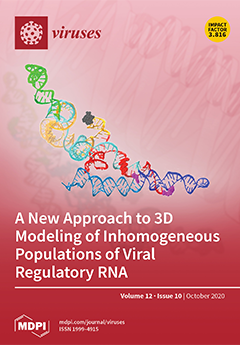Ver ítem
- xmlui.general.dspace_homeCentros e Institutos de InvestigaciónCIAP. Centro de Investigaciones AgropecuariasInstituto de Patología VegetalArtículos científicosxmlui.ArtifactBrowser.ItemViewer.trail
- Inicio
- Centros e Institutos de Investigación
- CIAP. Centro de Investigaciones Agropecuarias
- Instituto de Patología Vegetal
- Artículos científicos
- Ver ítem
A Survey of Mycoviral Infection in Fusarium spp. Isolated from Maize and Sorghum in Argentina Identifies the First Mycovirus from Fusarium verticillioides
Resumen
Mycoviruses appear to be widespread in Fusarium species worldwide. The aim of this work was to identify mycoviral infections in Fusarium spp., isolated from maize and sorghum grown in Argentina, and to estimate their potential effects on the pathogenicity and toxigenesis of the host fungus towards maize. Mycoviruses were identified in 2 out of 105 isolates analyzed; Fusarium verticillioides strain Sec505 and Fusarium andiyazi strain 162. They were
[ver mas...]
Mycoviruses appear to be widespread in Fusarium species worldwide. The aim of this work was to identify mycoviral infections in Fusarium spp., isolated from maize and sorghum grown in Argentina, and to estimate their potential effects on the pathogenicity and toxigenesis of the host fungus towards maize. Mycoviruses were identified in 2 out of 105 isolates analyzed; Fusarium verticillioides strain Sec505 and Fusarium andiyazi strain 162. They were characterized as members of the genus Mitovirus by high-throughput sequencing and sequence analysis. The F. verticillioides mitovirus was a novel mycovirus whereas the F. andiyazi mitovirus was found to be a new strain of a previously identified mitovirus. We have named these mitoviruses, Fusarium verticillioides mitovirus 1 (FvMV1) and Fusarium andiyazi mitovirus 1 strain 162 (FaMV1-162). To our knowledge, FvMV1 is the first mycovirus reported as naturally infecting F. verticillioides, the major causal agent of ear rot and fumonisin producer in corn. Both mitoviruses exhibited 100% vertical transmission rate to microconidia. The Fa162 strain infected with FaMV1-162 did not show phenotypic alterations. In contract, F. verticillioides Sec505 infected with FvMV1 showed increased virulence as well as microconidia and fumonisin-B1 production, compared with two uninfected strains. These results suggest that FvMV1 could have a role in modulating F. verticillioides pathogenicity and toxin production worth further exploring.
[Cerrar]

Autor
Jacquat, Andrés Gustavo;
Theumer, Martín Gustavo;
Cañizares, María Carmen;
Debat, Humberto Julio;
Iglesias, Juliana;
García Pedrajas, María Dolores;
Dambolena, José Sebastián;
Fuente
Viruses 12 (10) : 1161 (October 2020)
Fecha
2020-10
Editorial
MDPI
ISSN
1999-4915
Formato
pdf
Tipo de documento
artículo
Palabras Claves
Derechos de acceso
Abierto
 Excepto donde se diga explicitamente, este item se publica bajo la siguiente descripción: Creative Commons Attribution-NonCommercial-ShareAlike 2.5 Unported (CC BY-NC-SA 2.5)
Excepto donde se diga explicitamente, este item se publica bajo la siguiente descripción: Creative Commons Attribution-NonCommercial-ShareAlike 2.5 Unported (CC BY-NC-SA 2.5)


